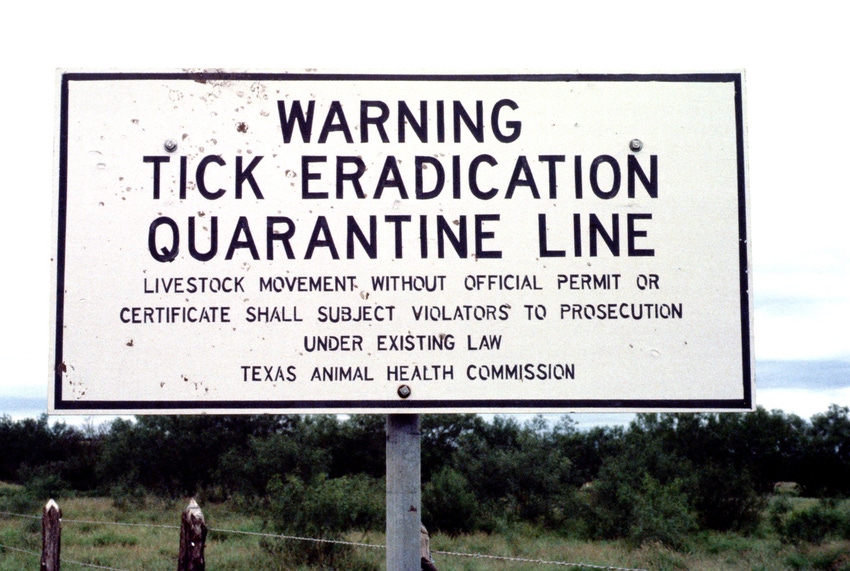Research funded to identify natural predator against southern cattle fever ticks to protect cattle health and ranchers’ livelihoods.
April 29, 2020

The southern cattle fever tick (Rhipicephalus microplus) can carry pathogens that cause bovine babesiosis, for which there is no vaccine or treatment. When the tick is found on Texas cattle, ranches or even adjacent areas, all cattle must be quarantined, which causes significant economic hardship, according to an announcement from the Foundation for Food & Agricultural Research (FFAR).
FFAR, together with the Lee & Ramona Bass Foundation, recently awarded a $50,000 "Rapid Outcomes for Agriculture Research" grant to the U.S. Department of Agriculture’s Agricultural Research Service (ARS) to research and develop biological control technologies that prevent and contain this parasite.
Cattle fever ticks were eradicated in the U.S. in 1943, with the exception of a permanent quarantine area along the border between southern Texas and Mexico, FFAR said. White-tailed deer and nilgai facilitated the reintroduction of the tick outside the quarantine areas and into other areas of Texas. Cattle fever ticks are a threat if they carry cattle fever pathogens, which can kill 70-90% of infected cattle. While no ticks in the U.S. have tested positive for the pathogens, they are present in Mexico.
“An outbreak of cattle fever could decimate the Texas cattle industry,” FFAR executive director Sally Rockey said. “The best way to protect cattle and Texas ranchers is to halt the tick invasion in the U.S. FFAR is funding research to identify a natural tick predator that can be introduced in Texas to protect animal health and ranchers’ livelihoods.”
Spraying pesticides to control the ticks in vast, rugged areas or on wildlife is not feasible, FFAR said. Instead, ARS researchers are studying parasitoids — predatory insects that prey on the ticks — to identify a natural biological control that could be introduced in Texas. Since the southern cattle fever tick is native to parts of Asia, the researchers are identifying parasitoids from Vietnam and other parts of the native range to help control the ticks' spread, FFAR noted.
The ARS work in Vietnam will test the cattle fever tick’s susceptibility to a variety of parasitic Asian tick predators and determine if any can be imported to combat the spread of the tick in Texas. Researchers have the expertise to identify a biological control agent that will prey only on cattle fever ticks and will not interfere with other species.
The Lee & Ramona Bass Foundation contributed $25,000 to match FFAR’s investment of $25,000 in this research.
You May Also Like


.png?width=300&auto=webp&quality=80&disable=upscale)
